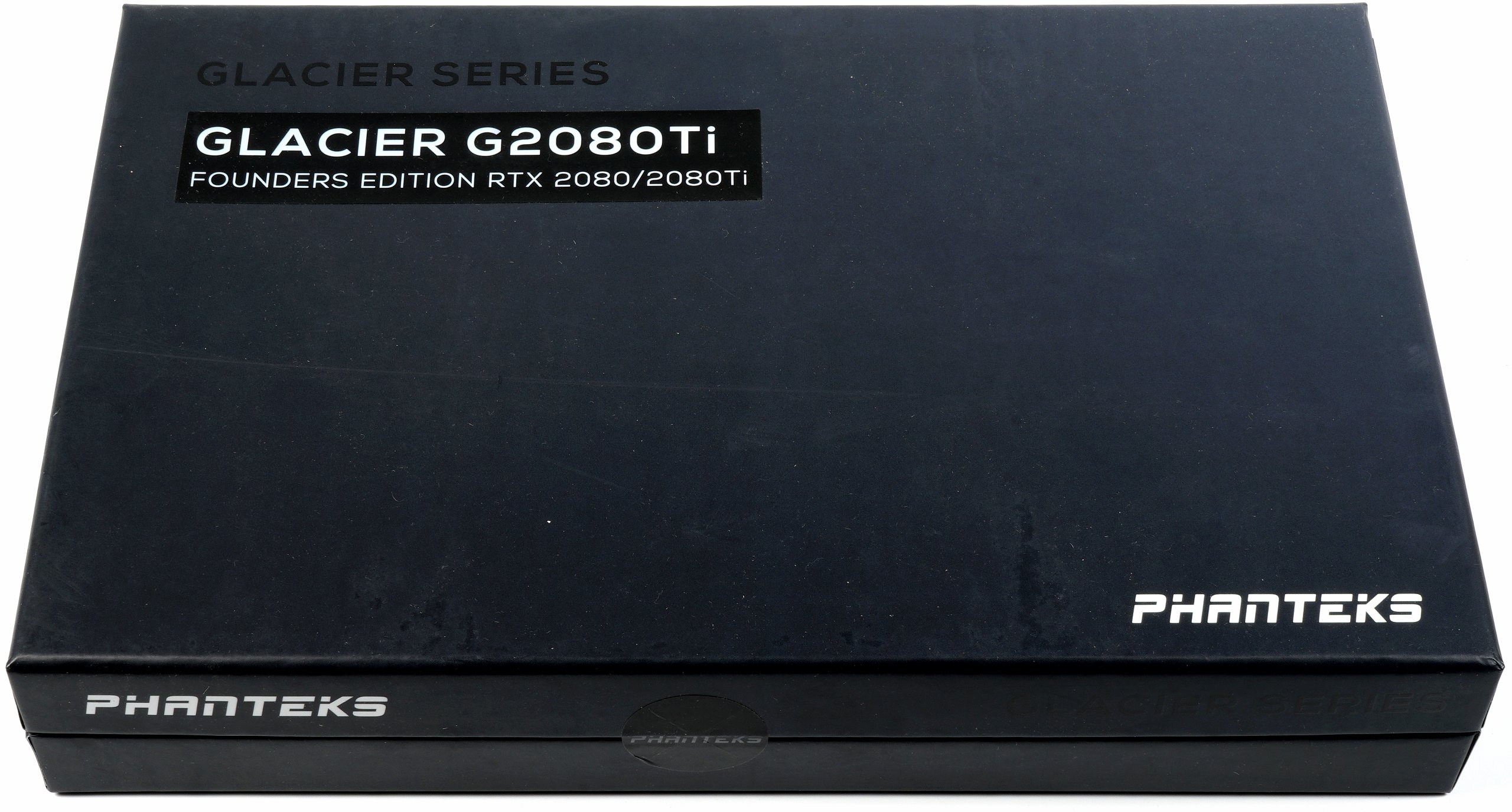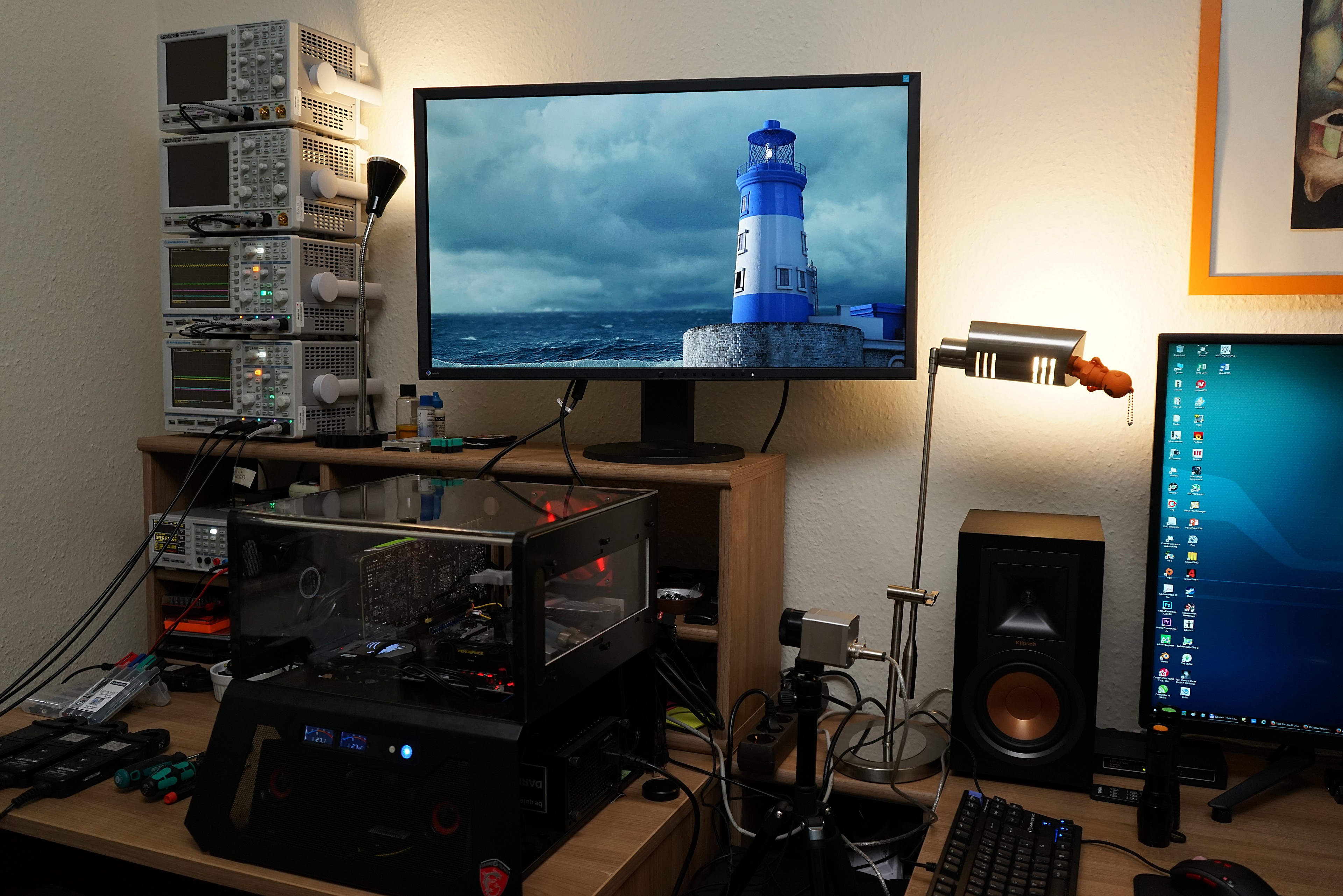In my two articles "GeForce RTX 2080 Ti – Why water cooling is more important than manual overclocking and this brings very little" and especially "Nvidia GeForce RTX 2080 Ti Founders Edition water-cooled? Forget it, here's the much faster alternative!" I've already discussed in great detail the cooling problem and the advantages of a potent water cooling. Recently I also had the EK Waterblocks EK RTX 2080 Ti RGB a first cooler in the test run.
Today comes the second one. Gradually I will test the other available models individually and later compare them in a final special and thus also determine the absolute winner. The Phanteks Glacier G2080Ti tested today is slightly different from the solution approach and interestingly even better overall than the emulator of EKWB. Too much spoiled? Certainly not, because you want to know why. And that's exactly what you only learn if you read everything.
But since the Otto Normal customer can check the GPU temperatures at most, I offer the rest of the temperatures as last time, because there are sometimes extreme differences in memory and voltage converters, which can hardly be determined with normal tests. Can. Testing is always carried out with a maximum power consumption of just under 380 watts for the board of the graphics card and a constant water temperature of 20°C, as well as a room temperature of 22°C and the same Witcher 3 gaming loop
Unfortunately, some test patterns have been delayed again, so the sequence of these tests will, contrary to expectations, continue a little further. But don't worry, because if someone has something to keep quiet about, I buy the part anonymously if necessary.
Unboxing, scope of delivery and assembly
The completely assembled water block, screws with acrylic washers, various thermal pads, thermal conductive paste and two plugs are supplied. The RGB light chain is integrated in the acrylic cover and is later brought to life by a pluggable adapter. Interestingly, only a normal small 3-pin Molex connector plus adapter plug is used here, which Phanteks calls an addressable RGB LED connector and which requires a special adapter for suitable motherboards.
If the motherboard does not offer this option, only a handle remains in the Phanteks accessory box or the purchase of a suitable motherboard. The scope of delivery is otherwise sufficient, the packaging stable, the instructions more or less plausible. So there is no need to write more on this point. Everything is in it, everything in it. point and fits.
Phanteks uses the Glacier G2080Ti throughout the thicker 1mm pads for memory and voltage converters, as well as the coils from the voltage converter range, while not cooling the flat caps. But even so, a decent cooling surface is already coming together.
The pre-assembled and pre-cut pads are relatively soft and stick better on the blue side than on the grey one. Therefore, you should put them on it as you can see it in the picture above. If not, you quickly run the risk that when turning the board over before putting it on the cooler, they will fall off again. That would be quite annoying and useless.
Technical data and manual
Before I put this conversion into operation on the next page and measure it, quickly see everything tabularly for all readers at a glance:
- Material: nickel-plated copper (bottom), acrylic (lid), aluminium (lid)
- Thread: 4x G1/4 inch
- Dimensions: 124 x 260 x 16.5 mm (W x H x D)
- Weight: 800 g (without liquid)
- Compatibility: NVIDIA GeForce RTX 2080 Ti Founders Edition (Reference PCB)
PH-GB2080TiFE
Test system and measurement methods
We have already described the new test system and the methodology in detail in the basic article "How We Test Graphics Cards, as of February 2017" and therefore refer to this detailed basis for simplicity. Description. So if you want to read everything again, you are welcome to do so. However, we have again improved CPU and cooling to largely exclude possible CPU bottlenecks for this fast card.
If you are interested, the summary in table form quickly provides a brief overview:
| Test systems and measuring rooms | |
|---|---|
| Hardware: |
Intel Core i7-6900K -4.5GHz MSI X99S XPower Gaming Titanium G.Skill TridentZ DDR4 3600 1x 1 TByte Toshiba OCZ RD400 (M.2, System SSD) 2x 960 GByte Toshiba OCZ TR150 (Storage, Images) Be Quiet Dark Power Pro 11, 850-watt power supply |
| Cooling: |
Alphacool Ice Block XPX 5x Be Quiet! Silent Wings 3 PWM (Closed Case Simulation) Thermal Grizzly Kryonaut (for cooler change) |
| Housing: |
Lian Li PC-T70 with expansion kit and modifications |
| Monitor: | Eizo EV3237-BK |
| Power consumption: |
non-contact DC measurement on the PCIe slot (Riser-Card) non-contact DC measurement on the external PCIe power supply Direct voltage measurement on the respective feeders and on the power supply 2x Rohde & Schwarz HMO 3054, 500 MHz multi-channel oscillograph with memory function 4x Rohde & Schwarz HZO50, current togor adapter (1 mA to 30 A, 100 KHz, DC) 4x Rohde & Schwarz HZ355, touch divider (10:1, 500 MHz) 1x Rohde & Schwarz HMC 8012, digital multimeter with storage function |
| Thermography: |
Optris PI640, infrared camera PI Connect evaluation software with profiles |
| Acoustics: |
NTI Audio M2211 (with calibration file) Steinberg UR12 (with phantom power for the microphones) Creative X7, Smaart v.7 own low-reflection measuring room, 3.5 x 1.8 x 2.2 m (LxTxH) Axial measurements, perpendicular to the center of the sound source(s), measuring distance 50 cm Noise in dBA (Slow) as RTA measurement Frequency spectrum as a graph |
| Operating system | Windows 10 Pro (1803, all updates) |








































Kommentieren